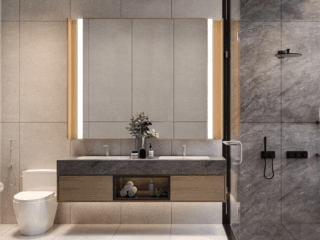
Access to a personal space to decompress, relax, focus, or simply get some much-needed alone time can be easily taken for granted — particularly when the whole family is home. However, if you take the time to build these spaces, you can help the entire family find a place they can call their own.
Why Is Personal Space Important?
While people are social by nature, needing time away from others is just as natural. It helps us strengthen our relationships and have space for personal reflection and development. For children and teens, it can help them develop independence, a sense of responsibility, and an understanding of boundaries for themselves and others.
Access to space where you can focus on your interests and values can allow you to develop as an individual and return to your partner or loved ones with a renewed sense of self. Taking time away will enable you to keep your relationships healthy and thriving.
When given their own space, children, like adults, can explore their interests and develop into their own persons. Physical and emotional boundaries can also be explored through the concept of personal space. While knowing that a sibling has access to a place that another sibling doesn’t can be challenging at first, over time, they start to understand that everyone needs their own space without the intrusion of another person.
Developing boundaries around time for yourself is also important as children grow up and enter new environments and situations. For example, it helps them learn how much time they need to recharge away from friends and roommates in college while still having a healthy social life.
How to Create Personal Spaces for Every Family Member
Between kids, partners, and pets, every inch of space in your home feels precious and essential — this can make it difficult to carve out areas where each of you can truly be alone. These tips can help you sort through the nooks and crannies of your home to find somewhere for everyone to exist in solitude when needed.
Turn Bedrooms Into Multi-Use Sanctuaries
Tackling personal space by designing bedrooms you and your kids want to be in is a great way to find somewhere for everyone to get away from the rest of the household — even when bedrooms are shared.
Add comfortable seating, a desk or other work surface, and different lighting options to create a room you or your kids will be drawn to when you need isolation or a quiet place to focus on work, homework, or a passion project. Parents may even want to consider a lounge space to catch up on their shows (instead of watching their kiddo’s favorite movie again), dig into a book they’ve been dying to read, or try out a new online casino SC coins hack.
Keep in mind that for children’s rooms, their needs will shift with their age and will likely need to be rearranged or changed. Aim for solid furniture foundations that can serve your child as they grow, like a comfortable bed and adequately sized dresser.
When kids are younger, you might move furniture off to the side so they have floor space to play. As they get older, you may rearrange things to add other practical furniture pieces or for the space to serve different functions. Take advantage of vertical space for personalization that can be easily adjusted or changed as interests develop and change, like display shelves, picture frames, and cork boards.
If your kids share a bedroom, you can still implement these things, but you will likely have to take a different approach as the space will be much tighter. Use furniture options like bunk beds or loft beds for more floor space. Consider adding curtains, dividers, and area rugs that help to physically define each child’s space.
Create an Outdoor Escape
Remember that personal space can also be found outside in the backyard or on a balcony, depending on the time of year. To accomplish this, create an outdoor space that’s enjoyable to spend time inwith comfortable seating (consider something like a porch swing or hammock), pillows, throws, and potted plants. It’ll create an outdoor oasis the whole family can take advantage of when they need an escape.
Separate Larger Rooms
Creating defined spaces for homes with open floor plans can help shape different areas where people can do their own thing. To divide spaces, you can use shelving (which has the bonus of extra storage) and couches to create two distinct rooms. You can also use partitions or room dividers, which take up less space than furniture or shelves but can still suit your style and aesthetic. You can further define these spaces with decor, including area rugs, different overhead and accent lighting, and potted plants.
Scout Out Infrequently Used Spaces
Most homes end up with areas that are used less than others, and taking advantage of these can help you create another space to support alone time.
Transform them into inviting home offices, reading nooks, or craft corners. Add in work surfaces, storage, and elements that add coziness (like soft lighting, pillows, and throws), and you’ll rejuvenate an unused space into something everyone will love.
Don’t Forget About the Pets
It might sound silly, but even your pets can need an escape from the family, especially during times of change, like a new addition to the family. For cats, a cat tree with a covered area is a great place for them to nap in solitude without being disturbed. A crate is an excellent option for dogs to retreat to as needed — it’s like their own bedroom.
Conclusion
By creating inviting spaces in bedrooms, outdoor areas, and unused spaces, everyone in the family can have a personal space to call their own and reap the benefits of alone time.







